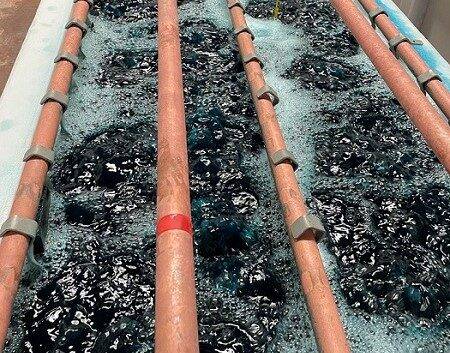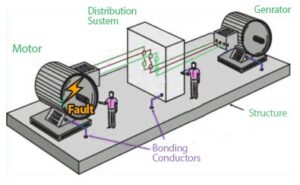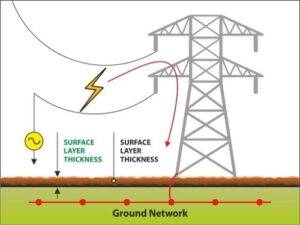The process of electroplating is to coat a thin layer of metal on another metal to improve its physical and chemical properties. This is usually done by applying a direct electric current which helps to create a strong chemical bond between the two metals.
Electroplating is generally done for two reasons, decorative purposes and protection. You may have heard of gold-plated ornaments. The same process of electroplating is done for coating gold on a metal surface which is a decorative purpose. Another example is the copper bonded rods used as earth electrodes formed by the process of electroplating. Electroplating is done to copper bonded rods to improve their electrical and mechanical properties. Here it provides longer life and greater conductivity to these rods. Copper bonded earth rods are made by copper bonding pure copper over high tensile low carbon steel rods. Thus, increasing the earth rod’s tensile strength and corrosion resistance in a cost-effective manner. Copper bonded electrodes can be deeply driven into the ground and are suitable for high resistivity soil conditions as they provide a low resistance path. Click here to view our UL Listed Earth Rods.
What is the Electroplating Process?
We have previously studied the process of electroplating in our school however, let us quickly go through the general process to have a better understanding.
The industrial process is similar to the school process, but it has some innovative changes needed for greater efficiency. As mentioned above, the process of electroplating is done to coat a layer of metal over another one. The two metals needed for coating act as the anode and cathode in the process of electroplating. They are dipped in an electrolyte solution, and then electricity is passed. The ions formed by the application of electric current slowly move towards the cathode and get deposited by forming a thin coating. Thus we obtain the electroplated rod. The thickness of the coating depends on the timespan of the process, a common example of that can be electroplating silver on a spoon.
What is the Electroplating Process for Earth Rods?
The factory process of electroplating is done in three main stages to obtain copper bonded electrodes:
1- Pre-cleaning
2- Electroplating
3- Post cleaning
Axis Copper Bonded Earth Rods are manufactured by following these steps to ensure the quality and efficiency of the earth rods.
Pre-cleaning:
First, in the pre-cleaning step, the anode and cathode used for electroplating are cleaned thoroughly to avoid all contaminations. The raw metals used can contain surface contaminations which can hinder the process and affect strong bonding. Next comes the process of electroplating. Here the raw materials are mild steel and copper, which undergoes the pre-cleaning process.
Electroplating:
Electroplating is the process by which mild steel is bonded with copper to obtain copper-bonded earthing electrodes. The cathode in the process is the material over which the electroplating is to be done, here it is Mild steel. The anode used here is the copper rod, and the electrolyte is copper sulphate solution. The final product of this process is a Copper Bonded Steel Rod.
Generally, copper bonding is for a coating thickness of 250 microns for copper bonded rods. This size or thickness of the copper coating can be varied according to the application or customer’s requirements by varying the duration of electroplating. By continuing the electrolysis for a longer duration we can increase the thickness of the copper coating.
Post cleaning:
The last step in the process is post-cleaning which involves the cleaning of the copper bonded mild steel earth rod. This is done to reduce the oxidation happening to the rod in the longer run, thus making it more efficient as an earthing electrode.
Advantages of Copper Bonded Earth Rod:
Copper bonding increases the corrosion resistance and durability of the earth electrode. The electroplating process ensures long-lasting molecular bonding between the copper and steel core. It does not get damaged even when deep driving the electrode into any harsh ground making the installation easier. Earthing electrodes are specifically designed and copper bonded to improve the conductivity and therefore fault current dissipation. Due to its increased corrosion resistance, its lifetime also increases exceptionally and becomes suitable for all types of soil.
Axis Earth Rods are designed to be used in all types of soils and are ideal for places like substations and factories, which require efficient fault current dissipation. For more information check out our range of UL Listed Copper Bonded Rods
Thank you for reading the blog, Axis is a leading manufacturer and supplier of Electrical Components to over 80+ Countries. Talk to our industry expert by visiting our contact us section. You can also watch our videos by our experts – click here.








